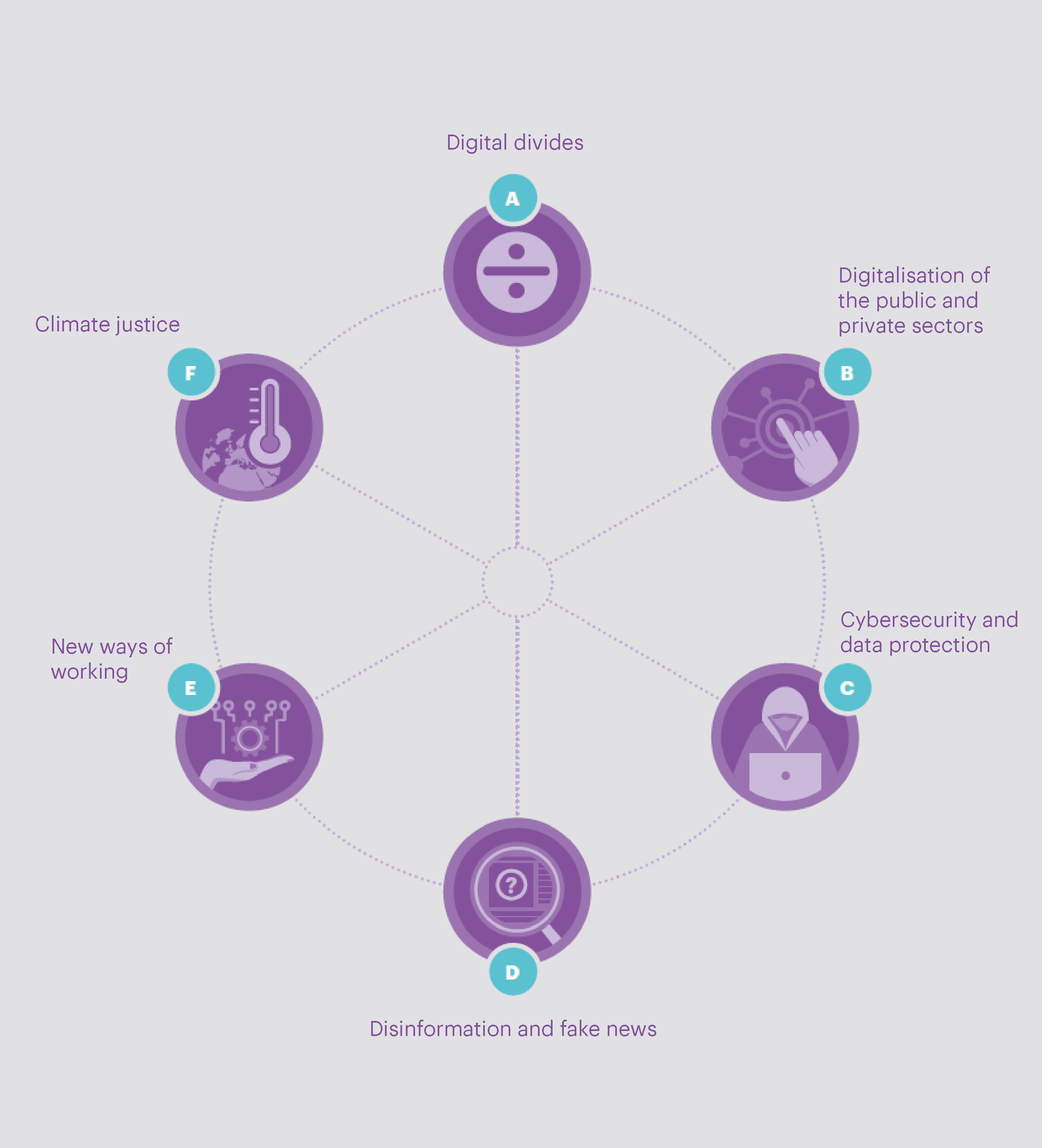Spain is ranked 7th best in the world for its preparedness for economic transformation through its transport and communication infrastructure and is the European Union country with the highest penetration rate of fibre to the home. Therefore, the digital exclusion challenge in Spain is not focused on access to digital infrastructure and the internet, which has traditionally been called the digital divide in the singular. We are faced with a more complex challenge that includes the need to address several areas beyond access to and quality of connection to the internet. Therefore, the priority is digital divides in the plural.
To address and overcome these divides it is crucial to assess whether people have access to electricity, the internet and electronic devices, and the quality of this access; computer skills and traditional literacy; a command of ICTs and the internet; and favourable conditions including affordability, legally valid identification, financial inclusion, and trust and security.
Download the white paper to learn more
This is an age of emergency. The digital emergency that is the subject of this white paper exists alongside the climate crisis and the Covid-19 pandemic. The effects of the pandemic and extreme climate change have had and continue to have a clear negative social and economic impact that is a source of great concern for citizens and institutions. However, the right management of the digital emergency could provide an opportunity to reduce the negative impacts of the other emergencies and vice versa.
Technologies could be used to reduce our environmental footprint or for the diagnosis, treatment and monitoring of Covid-19 cases. Furthermore, an increasing number of agents in all spheres — government, social, business — are joining forces to address the challenge of the climate emergency. Examples include the United Nations Paris Agreement to cut greenhouse gas (GHG) emissions, the European Green Deal and the commitment to achieve Agenda 2030. Likewise, as indicated by the Organisation for Economic Cooperation and Development (OECD) and other institutions, the digital emergency requires action to ensure a balanced, fair and inclusive digital transformation, with coordinated strategies to help build the resilience we need in this new, post-Covid era before it is too late.
Yes, this may be a time of multiple crises but working to address the digital emergency can help build further resilience in the efforts to counter the existing climate crisis and the Covid-19 pandemic.
Download the white paper to learn more
To address the digital emergency, civil society, governments and the private sector need to address the digital divides (a) as a complex phenomenon that goes beyond access and infrastructure as they are deeply rooted in society’s structural inequalities. In order to bridge these divides, the digitalisation of the public and private sectors (b) is key, given that they represent the main barriers and drivers of digital uptake. Furthermore, to ensure inclusive digital participation, digital trust is essential and therefore it is necessary that these actors guarantee a safe and secure online experience through cybersecurity and data protection (c). And, just as important, they play a critical role in the fight against (d) disinformation and fake news. As digitisation has enabled new ways of working (e), the new digital economy must be an opportunity for all to participate. And finally, the way we address the digital emergency must go hand-in-hand with the fight for (f) climate justice, as the ecological cost of technology must be minimised to ensure a green and digital future.
Download the white paper to learn more




